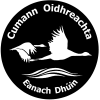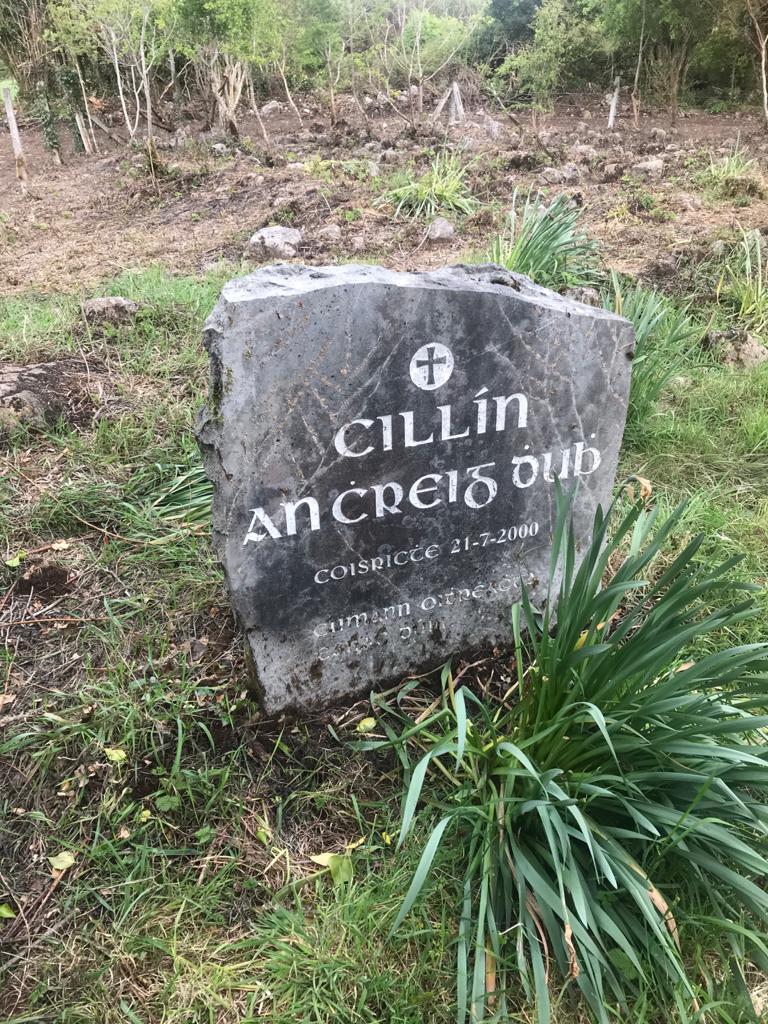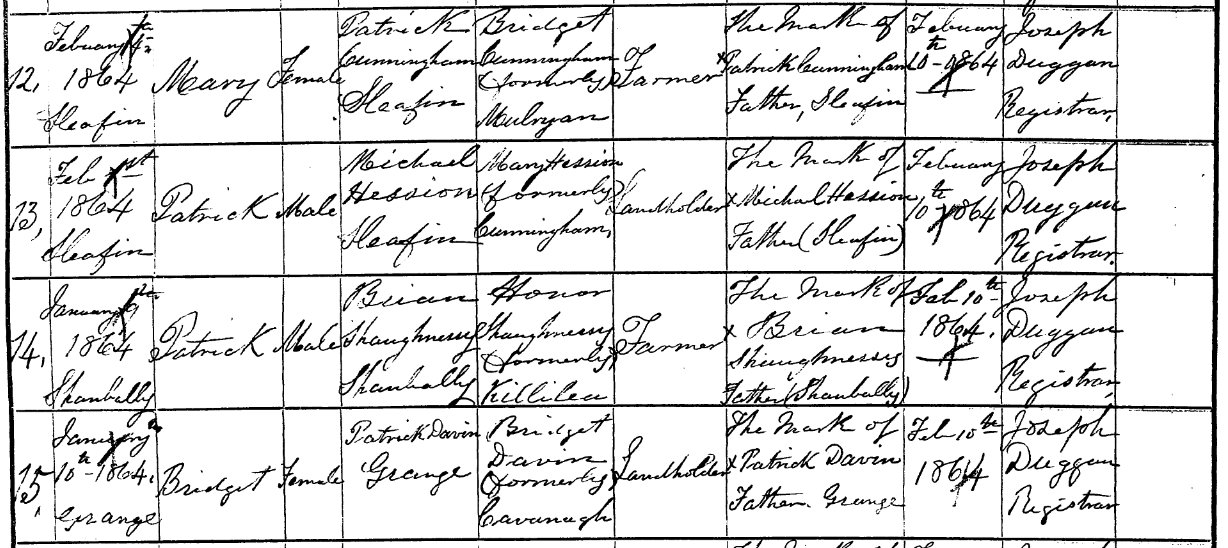By Br. Conal Thomas
The children’s burial ground Cathair a’ Cillín at Cregduff was recently cleared and tidied up by a group of locals, to whom the gratitude of the community is due. The burial ground is situated on Michael Devaney’s land in Cregduff. I first visited it on the evening of 17 April 1995 in the company of John Murphy, Cregduff, and the late Patrick McNamara, Park. John pointed out the exact location which was then completely overgrown with briars and whitethorn shrubs.
There are numerous upright stones within a small enclosure as at other local children’s burial sites. John Murphy mentioned that two of his sisters were buried in the plot: one who died at birth and the other named Mary Ann who died in 1933 at the age of six months. John was five years at the time and can recall attending the funeral in the company of the family and neighbours, without the services of a priest. Fr. O’Brien, former P.P. of Annaghdown, informed John that there was evidence of this burial in the church records. John expressed a wish that the whole plot should be cleared, marked and that the right of way road should be made passable. Patrick McNamara recalls making a coffin for a child from Park who is buried at Cathair a’ Cillín.
With the aid of two Fás workers and assistance from some locals, work commenced on clearing the laneway and cillín of scrub which proliferated there for many years. The burial ground was consecrated by Fr. Martin Newell, P.P. on 21 July 2000, and a large inscribed stone was erected by the Heritage Society to mark the location for posterity. Traditionally this was regarded as a place for unbaptised babies, and that may be so in general, though we know that baptised babies were buried here also. Together with this site at Cregduff there are at least eight other children’s burial grounds in the parish of Annaghdown: at Tonagarraun, Barranny, Tonamace, Grange, Aucloggeen, Slievefin, Corrandrum, and on a border site between Glenrevagh and Bunatober – though this latter one was probably a general graveyard. The custom of setting apart a separate burial place for children is an ancient one, known to have been practised by the Greeks and Romans. In Ireland, they are called by various names such as ceallúnach, calluragh, lisín, cillín, or simply children’s burial grounds. Why were children buried in such locations? One of the suggested reasons is that the parents wished their children’s bodies to remain on a site near the home, as is still the custom in many rural ares of west and east Africa for all of their deceased.
Apart from the popular belief that they were used for the burial of unbaptised babies, it is also clear that they are the resting place of other groups, for example, still-born babies, strangers, baptised babies, and Famine victims. Many of the graves are characterised by the presence of small, uninscribed set stones, often arranged in rows. They are to be found in various locations such as in ringforts (e.g. Slievefin), townland boundaries (e.g. Glenrevagh), near old churches (e.g. Grange and Corrandrum), at a road intersection, at the end of a field (e.g. Aucloggeen), or under a lone bush, etc.
Note: This article originally appeared in our Summer 2020 Newsletter.








Pingback:Lived Respected, Died Regretted. – Here comes the Judge.